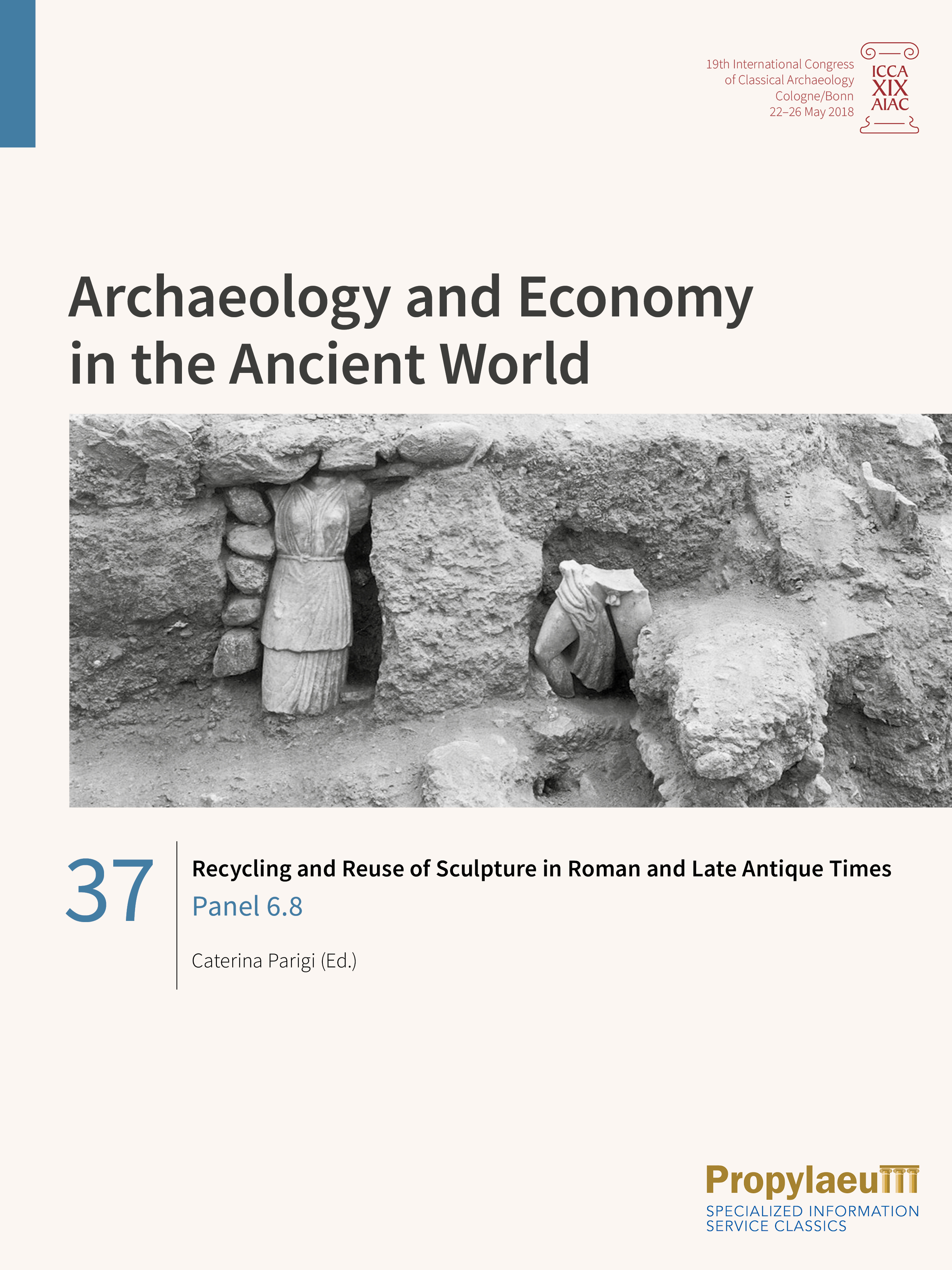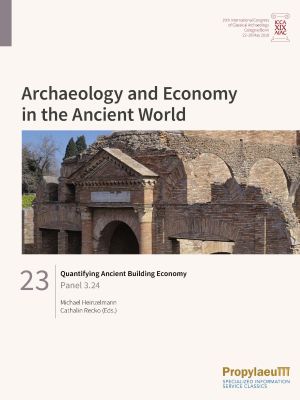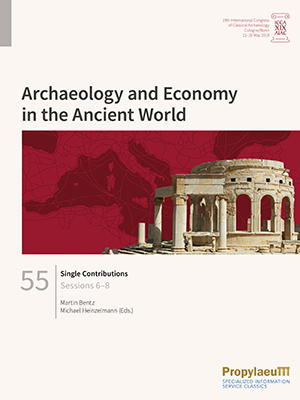Barker, Simon
Recycling and Reuse of Sculpture in Roman and Late Antique Times: Panel 6.8
Die Wiederverwendung von Skulpturen war eine typische Praxis in der Antike und wurde in unterschiedlicher Art und Weise in mehreren Orten und Zeiten ausgeübt.
Der Band konzentriert sich auf zwei Aspekte dieses Phänomens: Auf der einen Seite wurden Skulpturen und ihre Teile als Baumaterial wiederverwendet. Auf der anderen Seite behielten die Skulpturen ihre Funktion bei und wurden als Kunstwerke wiederverwendet.
Die Praxis bringt mit sich eine Reihe von Konsequenzen in Zusammenhang mit dem sozio-ökonomischen Aspekt. Eine große Rolle für die Wiederverwendung spielt der Wirtschaftsfaktor, deswegen muss steht berücksichtigt werden; sowie die Schwierigkeit in der Spätantike neue angefertigten Skulpturen zu beschaffen. Die Wiederverwendung ist aber eine komplexe Praxis, die nicht nur auf die spätantike Zeit beschränkt ist und dessen Beweggründe vielseitiger sind. Die Wiederverwendung von Skulpturen als Baumaterial kann manchmal ästhetische Gründe haben und zeigt einen deutlichen Verweis auf älteren Epochen.
Der Band fokussiert auf die römische und spätantike Zeit. Ziel ist es, die Kontinuität und die Komplexität des Phänomens zu zeigen. Durch die Diskussion und den Vergleich mehrerer Fallstudien aus unterschiedlichen Kontexten werden Ähnlichkeiten und lokalen Besonderheiten hervorgehoben.
Quantifying Ancient Building Economy: Panel 3.24
Die Forschung zu antiker Baugeschichte und Architektur hat sich in den letzten Jahren auf wirtschaftliche Aspekte der unterschiedlichen Bau- und Arbeitsprozesse fokussiert. In diesem Zuge können nicht nur einzelne Arbeitsschritte und Abläufe untersucht werden, sondern auch die Organisation einer Baustelle. Dafür werden Versuche unternommen, sowohl das Baumaterial als auch die benötigte Arbeitszeit zum Bau eines Gebäudes zu quantifizieren, um die Größenordnung sowie die gesamtwirtschaftlichen Auswirkungen zu erfassen.
Ziel dieses Bandes ist es, verschiedene Ansätze zur Untersuchung dieser Bauökonomie zusammenzubringen. Mit Hilfe der Methodik der Quantifizierung sowie detaillierter Studien zur Architektur werden die Bauwerke der hier gesammelten Fallstudien in Bezug auf ihre baulichen Charakteristika und die damit verbundenen wirtschaftlichen Implikationen beleuchtet. Zu diesen Bauwerken gehören Stadtmauern, Holzbauten, Thermen und Tempel. Der zeitliche Horizont der Beiträge erstreckt sich vom Messene des 4. Jh. v. Chr. bis hin zur Kaiserzeit und wird vervollständigt durch praxisorientierte Einblicke in Ingenieurshandbücher aus dem 19. Jh.
Sessions 6–8, Single Contributions
Wirtschaftliche Aspekte durchdringen alle Bereiche des öffentlichen und privaten Lebens in alten Gesellschaften, sei es in der Stadtentwicklung, der Religion, der Kunst, dem Wohnen oder dem Tod. Die Erforschung der antiken Wirtschaft spielt seit langem eine wichtige Rolle in der Alten Geschichte. In den letzten Jahrzehnten ist aber auch in der Archäologie zunehmend das Bewusstsein gewachsen, dass die materielle Kultur alter Gesellschaften ausgezeichnete Möglichkeiten bietet, die Struktur, Leistung und Dynamik alter Wirtschaftssysteme und Wirtschaftsprozesse zu untersuchen. Hauptziel dieses Kongresses war es daher, die Ökonomie als ein zentrales Element der klassischen Gesellschaften zu verstehen und ihre Wechselwirkung mit ökologischen, politischen, sozialen, religiösen und kulturellen Hintergründen zu analysieren. Das Thema des Kongresses richtete sich an alle Disziplinen, die sich mit der griechisch-römischen Zivilisation und ihren Nachbarkulturen von der ägäischen Bronzezeit bis zum Ende der Spätantike befassen.
Dieser Sammelband beinhaltet einzelne Beiträge der Sessions 6, 7 und 8, die sich mit Fragen zu Konsum und Investitionen in Alltag, Heiligtümern und urbanen Kontexten sowie mit Fragen zur Rolle der Stadt in der antiken Wirtschaft auseinandersetzen.









